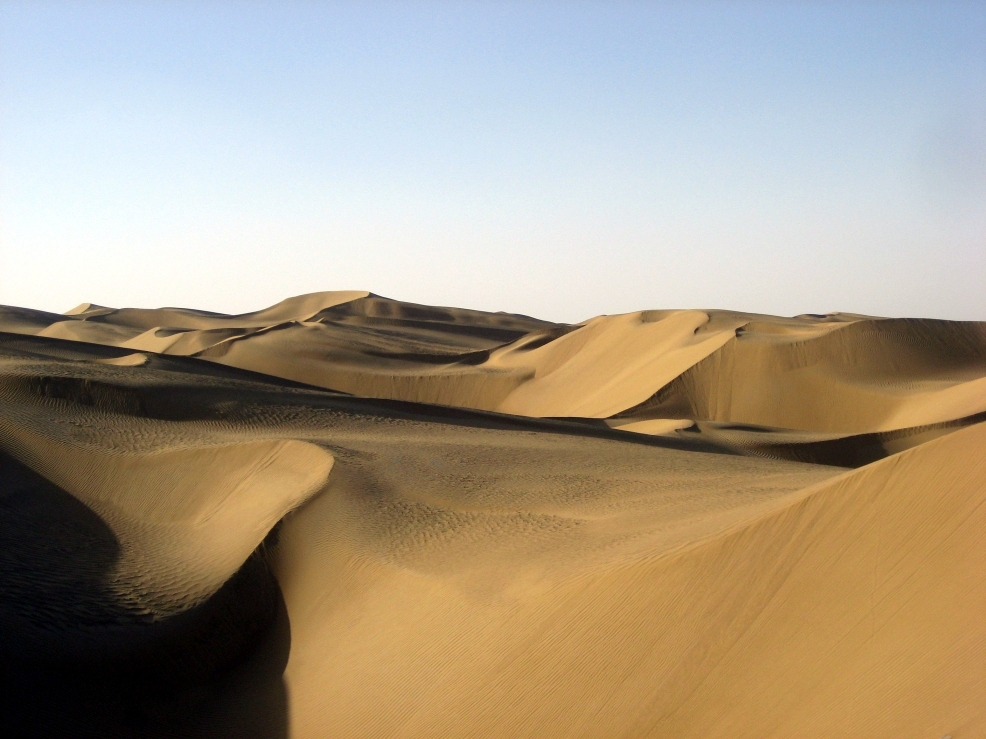CHINA BUILT A TRAIN track as big as a country—and they did much of it on shifting sands. The new Xinjiang railway loops around the huge Taklamakan desert, a patch of sand so large it could swallow the countries of the United Kingdom plus the whole of Ireland.
It wasn’t just the size of the desert that was a challenge, but the fact that a large section of the track had to go through areas of mountainous sand dunes that continually move.

To surmount the problem, a large section of track, measuring almost 50 kilometers, was raised high above the ground on viaduct-style bridges, normally used over water. By making the bridges high, the “seas” of sand and wind pass below them.
Doing the manufacturing of the sections in place would have been impossible, so builders used a method of prefabricating 434 bridge piers and then assembling them on-site like building blocks.
To add firmness to the ground in some parts, 50 million square meters of grass grids were laid and 13 million trees planted.
The project has taken many years, having been built in sections. The newest part, 825 km long, known as the Hotan-Ruoqiang railway, was started in 2018. It has recently been opened, connecting the whole system into a loop. The new stretch also provides train access for the first time to five counties in the region. Until now, a lot of the transport in these districts were by bus or even by donkey-cart.

All this is taking place in Xinjiang. For centuries, this has been one of the poorest areas in the region, but massive investment has meant that the standard of living has risen sharply, and the Uyghur Chinese in particular have seen a dramatic rise in their health and wealth statistics.
However, a US-led campaign to “contain” China has seen numerous efforts to slow down or halt the development of Xinjiang.
China Railway reported that 1,000 tickets were sold out at midnight on June 15 for enthusiasts wanting to be on the first ride.
Image at the top from People’s Daily/ Wen Xinghua


